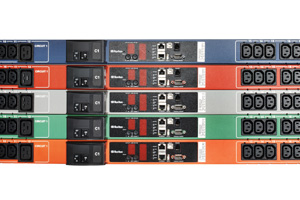In an era of 24 x 7 global connectivity businesses cannot afford any downtime at all…
Data center power monitoring systems can be a powerful tool to help achieve the overall initiatives in the facility. Selecting the right power monitoring system for your facilities current and future needs is an important part of the selection process.
Implementation and integration of the power monitoring system are steps that can be easily overlooked, but they play a big role in the effectiveness of the facility and the DCIM or BMS systems they compliment. Flexibility, adaptability, accuracy, communications, and device functionality are important characteristics of a successful power monitoring system.

Here are the “top five” best practices in choosing a system:
- Think Flexibility: With all of the power distribution types (e.g. PDUs, Panel Boards, Busway, etc) that may be in your one or multiple data centers and the variety of vendors who supply these products (e.g. Emerson, Geist, ServerTech, Raritan etc.) that might be present, the power monitoring products you install need to be able to interact effectively with the all of them. Choosing a “platform” that covers the spectrum of power distribution types and vendors, as well as various amperage sizes and circuit configurations, will simplify deployments and streamline integrations into software systems.
- Stay Adaptable: Use busway power because of the adaptable power distribution system it provides. PDUs and panel boards are also frequently changed and modified to support the dynamic data center environment. Make sure that your power monitoring products can adapt when the power shifts – that way you’ll save money on re-building or replacing the existing meters.
- Achieve Utility Grade Accuracy: Most data center power meters claim to offer accuracy that is within five percent of the actual power utilization. Although five percent is not insignificant, the best practice in power monitoring is to attain utility-grade accuracy, which is within one percent of the actual amount of power consumed. The reason? A utility grade level of accuracy enables co-located and other data centers to fairly re-bill clients for the cost of energy.
- Avoid Non-standard Protocols: Does your data center use SNMP to communicate between systems? Modbus TCP? BacnetIP? If the power monitoring meters don’t utilize standard communication protocols it will be more time-consuming and costly to integrate the meters with a DCIM or BMS systems. The best way to avoid this problem is to make sure that any metering system you purchase has the RIGHT communications protocols for the software system you plan to utilize. Ideally, your metering platform should be able to support all your power distribution products, communicate easily to the software, and interact seamlessly with all of the other components of the data center.
- Look for Greater Device Functionality: Typical monitoring solutions require a complex and costly network of protocol conversions, middleware, and data interpretations to provide the operations and engineering teams with a comprehensive picture of power consumption in the facility. Features such as onboard Ethernet, onboard data logging, onboard alarming, and an accessible web interface can reduce the failure points and cost associated with a monitoring deployment.
Power Management Solutions
 Power Monitoring & Management Software
Power Monitoring & Management Software
In modern data center design, the most overlooked elements are power utilization, consumption and monitoring. Even when a data center is built out, thinking about power usage must always be at the forefront of any IT administrator’s mind. Making the right decisions can improve server health and data center efficiency.
 iPDU
iPDU
Rack-mountable PDUs are known by several different names, including smart PDUs and intelligent PDUs. Such PDUs displays for devices sharing power well as remote management tools that use the Simple Network Management Protocol (SNMP) to provide administrators with the ability to adjust and monitor power demands from offsite locations.




